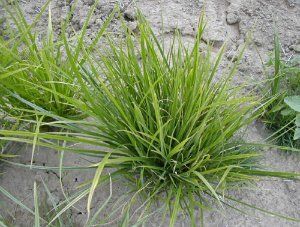Description: Corn Cockle, scientifically known as Agrostemma githago, is an annual flowering plant belonging to the Caryophyllaceae family. Known for its attractive, bright purple flowers, this plant was once a common weed in wheat fields. However, modern agricultural practices and increased awareness of its toxicity have led to efforts to control its presence.
Habitat and Distribution: Native to Europe, Corn Cockle was historically prevalent in wheat fields but has become less common due to improved farming techniques. It thrives in disturbed areas, including cultivated fields and gardens, where its seeds can persist in the soil for an extended period.
Physical Features: Leaves: The leaves are lance-shaped and arranged alternately along the stem.
Flowers: Corn Cockle produces vibrant, deep purple flowers with five petals. The flowers are solitary and appear at the tips of the stems.
Concerns and Control:
- Toxicity: Corn Cockle contains toxic compounds, including saponins, which can be harmful to humans and livestock if ingested. This toxicity is a significant concern in agricultural settings.
- Competitive Nature: Corn Cockle can be competitive in agricultural fields, where it competes with cultivated crops for nutrients, water, and sunlight.
Control Methods:
- Cultural Practices: Crop Rotation: Implementing crop rotation practices can disrupt the lifecycle of Corn Cockle and reduce its prevalence in agricultural fields.
- Timely Planting: Ensuring timely planting of crops can help crops establish and outcompete Corn Cockle, reducing its impact on yield.
- Mechanical Control: Hand Removal: Manual removal of Corn Cockle from fields and gardens can be effective for small infestations. Ensure the entire plant, including the root, is removed to prevent regrowth.
- Chemical Control: Herbicides: Selective herbicides designed for broadleaf weed control can be used to target Corn Cockle. Careful application following guidelines is essential to avoid harm to desirable plants.
- Seed Bank Management: Reducing Soil Disturbance: Minimizing soil disturbance through conservation tillage practices can help limit the germination of Corn Cockle seeds present in the soil.
Preventing Spread:
- Early Detection: Regularly monitoring fields and gardens for the presence of Corn Cockle is crucial for early detection. Prompt removal or control measures can prevent its spread.
- Clean Seed: Ensuring that seed used for planting is free of Corn Cockle contamination is essential to prevent the introduction of seeds into new areas.
- Educating Farmers: Providing information and education to farmers about the risks associated with Corn Cockle and implementing best practices for its control can contribute to a coordinated effort in managing this weed.
In conclusion, Corn Cockle poses challenges in agricultural settings due to its competitive nature and toxicity. Integrated pest management strategies, combining cultural, mechanical, and, if necessary, chemical control methods, are crucial for effective control. Early detection and prevention measures are essential components of a comprehensive approach to managing Corn Cockle and mitigating its impact on crops and ecosystems.



